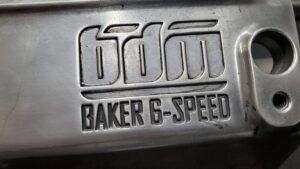Moving parts in a transmission generate heat due to friction.
The gear oil circulates and helps to carry this heat away, preventing overheating which can lead to oil breakdown, component damage, and premature failure. Incorrect viscosity can hinder this process. Oil that is too thick may not flow and circulate efficiently, leading to localized overheating. Oil that is too thin may not have the thermal capacity to effectively absorb and dissipate heat.
Big Dog motorcycle transmission maintenance
The proper gear oil weight, or viscosity, is absolutely central for a motorcycle transmission for several critical reasons:
1. Optimal Lubrication:
- Film Strength: Gear oil of the correct weight forms a lubricating film between the moving parts (gears, bearings, shafts).
- Load Carrying Capacity: The viscosity of the oil directly impacts its ability to withstand the immense pressures and loads generated within the transmission during gear changes and power transfer. The correct weight ensures the oil film doesn’t break down under stress.
2. Heat Dissipation:
- Moving parts in a transmission generate heat due to friction. The gear oil circulates and helps to carry this heat away, preventing overheating which can lead to oil breakdown, component damage, and premature failure.
- Incorrect viscosity can hinder this process. Oil that is too thick may not flow and circulate efficiently, leading to localized overheating. Oil that is too thin may not have the thermal capacity to effectively absorb and dissipate heat.
3. Smooth Shifting:
-
- The gear oil’s viscosity affects the engagement and disengagement of gears. The correct weight allows for smooth and precise gear changes.
- Too thick oil: Can cause sluggish or stiff shifting, making it harder to engage gears and potentially leading to missed shifts. It can also increase drag, affecting performance.
- Too thin oil: Can result in noisy or clunky shifting, and may not adequately cushion the gear engagement, leading to increased wear on the shift components.
4. Component Protection and Longevity:
- Proper lubrication and heat dissipation provided by the correct oil weight are crucial for the longevity of all transmission components, including gears, bearings, seals, and shafts.
- Using the wrong weight can accelerate wear, leading to premature failure and costly repairs. For example, insufficient film strength from oil that is too thin can lead to pitting and scoring of gear teeth.
5. Preventing Leaks:
- The viscosity of the gear oil is also considered in the design of the transmission seals. Using oil that is significantly thinner than recommended can potentially lead to leaks past these seals.
In essence, using the manufacturer-recommended gear oil weight ensures that all the critical functions of the lubricant are optimized for the specific design and operating conditions of your motorcycle’s transmission. Deviating from the recommended weight can compromise these functions, leading to reduced performance, increased wear, potential damage, and a shorter lifespan for your transmission. Always consult your motorcycle’s owner’s manual for the specified gear oil weight.












0 Comments